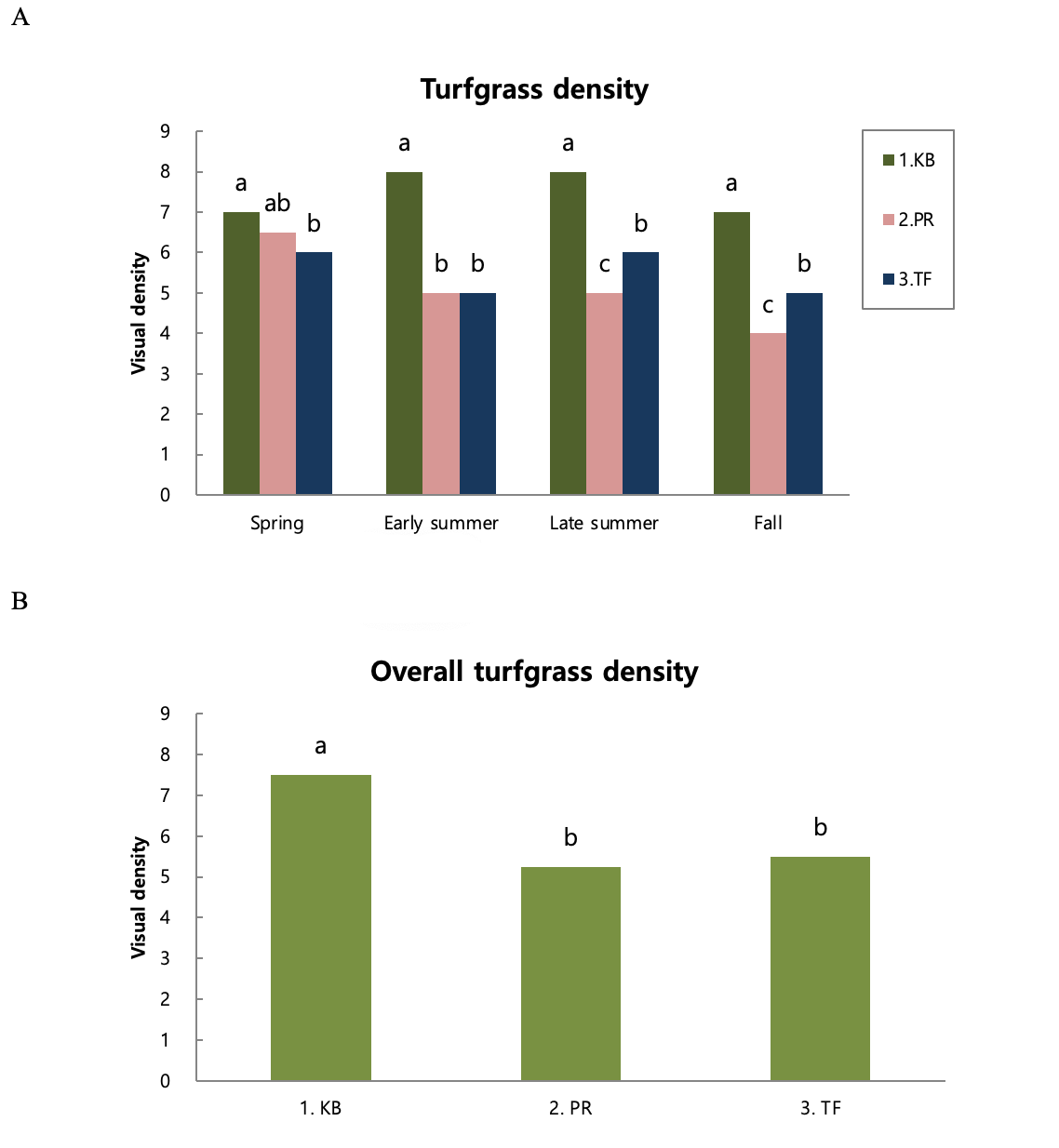Abstract
This study was conducted to compare growth characteristics and infiltration rate in major cool-season grasses (CSG) under California soil system and to provide basic information on sports turf design, construction and maintenance. Treatments were comprised of Kentucky bluegrass (KB,
Figures & Tables

Fig. 1.Seasonal (A) and overall (B) turfgrass density of major cool-season grasses in California system. KB, PR, and TF represent Kentucky bluegrass, perennial ryegrass and tall fescue, respectively. a-c: Bars with different letters are significantly different based on Duncan's multiple range test at P=0.05.


